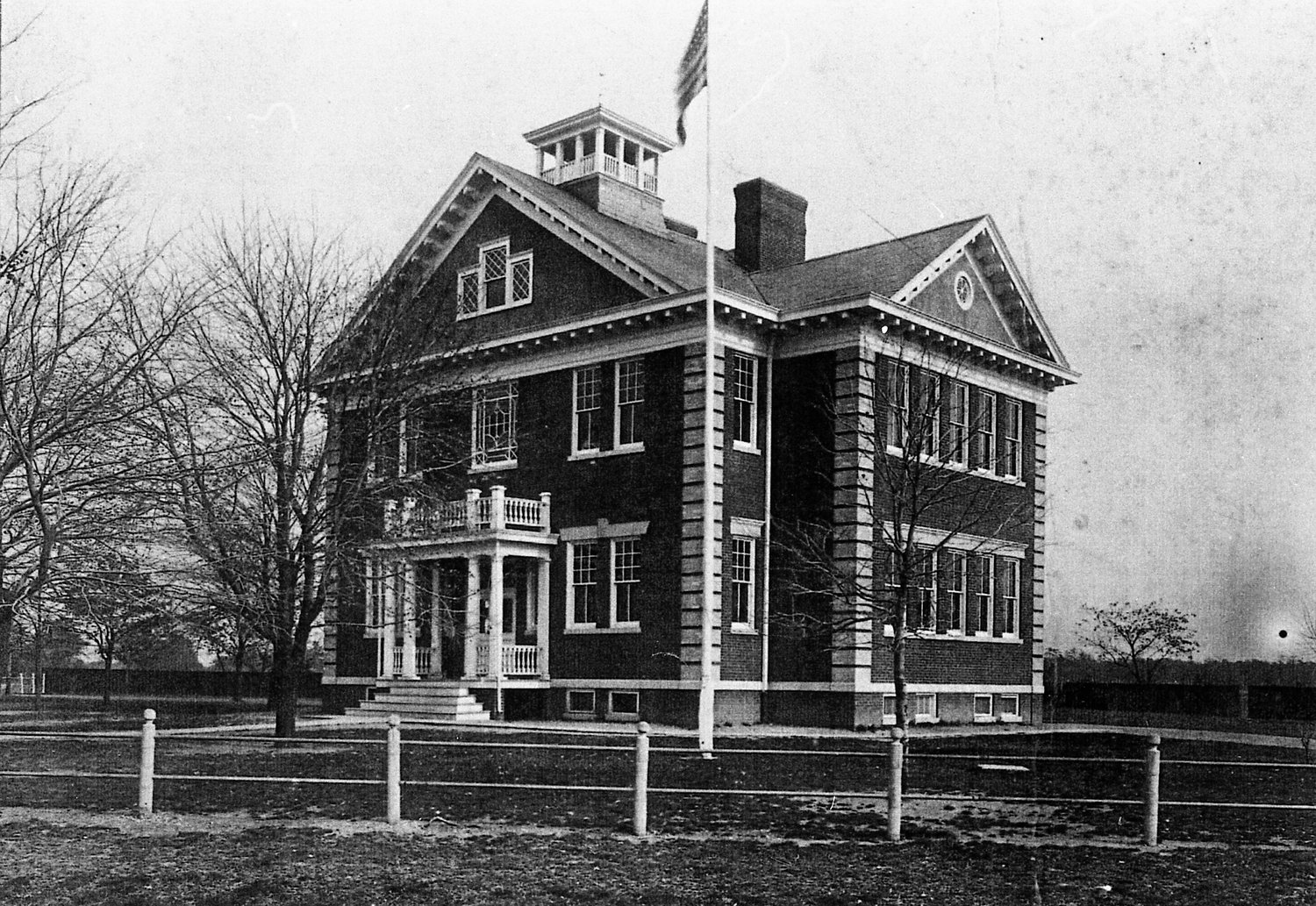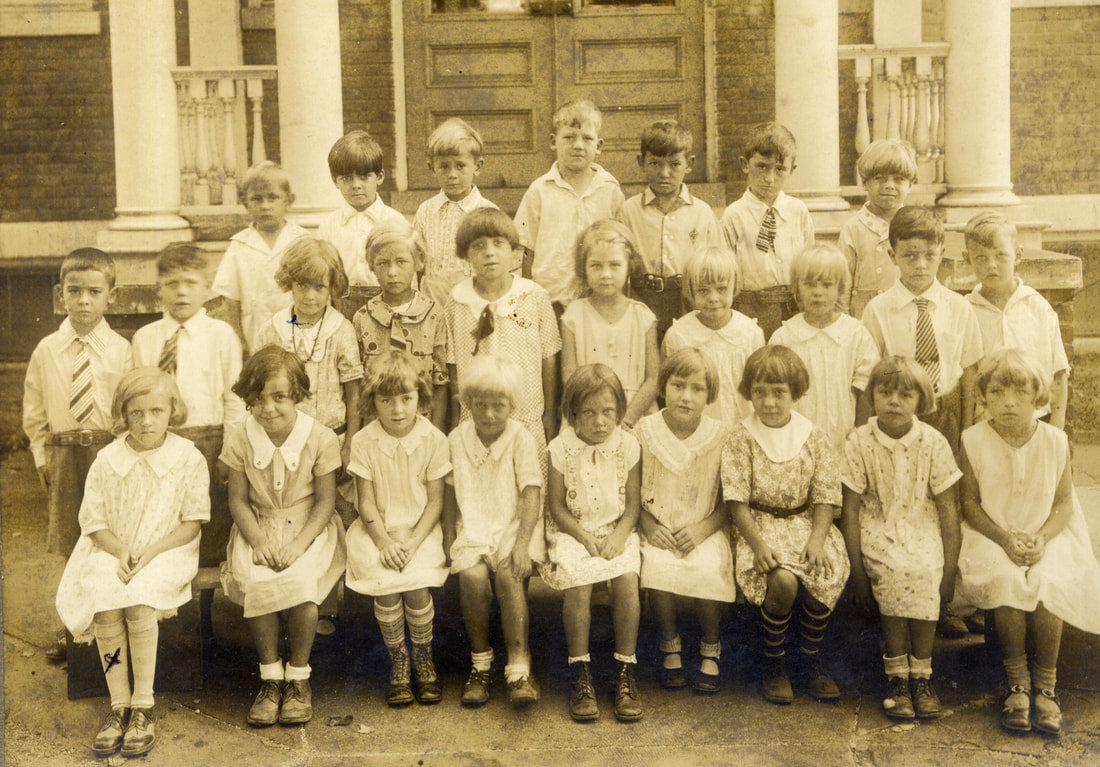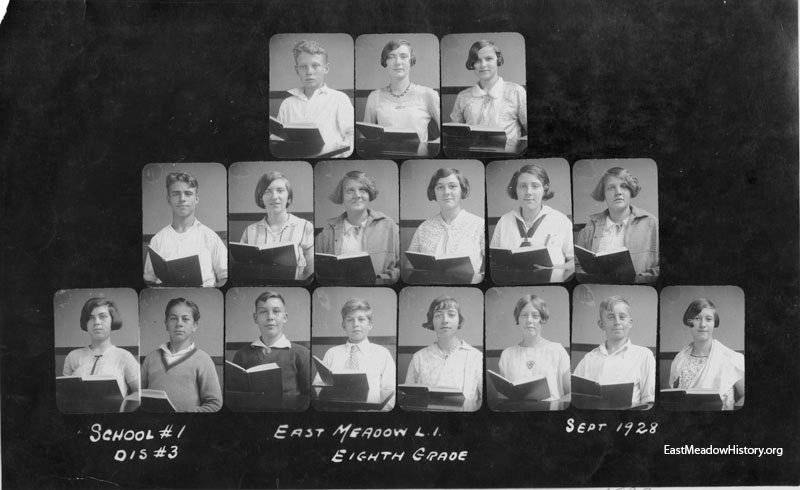Front Street School in the Twentieth Century
Last week's article explored the early history of East Meadow education. If you recall, a one-room schoolhouse at Front Street and Newbridge (East Meadow) Avenue was used until 1895, at which time a two-room frame structure was erected. After only fifteen years of use, the school was inadequate for East Meadow's children. Truthfully, the building was never big enough, but the taxpayers of the late 19th century were not known for their enthusiasm spending money on public education.
In 1911, a beautiful "modern" $17,000 brick building replaced the two-room schoolhouse. The builder of the 1895 school, E.P. Smith, purchased back the wood from the district. The new school had four classrooms and was graded: typically, two grades were taught together by one teacher. After World War I, developers build homes near Stuyvesant Avenue and the school-age population experienced a mini "boom," though East Meadow was still primarily agrarian. The Front Street School, as it became known, was expanded to meet the needs of a growing community. Four additional classrooms and a basement were built in a large annex on the rear of the building. The same year, electric service came to Front Street and illuminated its classrooms.
For the next three decades, Front Street School typically employed one teacher per grade, with some combined classes. Recently-obtained payroll and attendance records show that the average salary in the 1920s was $1,500 per year (about $22,000 in today's dollars, adjusted for inflation). Through World War II, class sizes ranged from about 15 to 25. After the construction of Newbridge Road School in 1928, one supervising principal served as the instructional leader for both district schools. Other innovations of the 1930s such as instrumental music and physical education classes, were taught by shared staff. East Meadow was part of a shared "supervisory district" led by Wellington C. Mepham. Before each school district grew large enough to hire individual superintendents, he oversaw all the common schools in a section of Nassau County.
Just as Long Island was experiencing the largest "Baby Boom" in American history, the Front Street School was destroyed. A fire broke out on December 5, 1950 and the school was deemed to be beyond repair. Newspaper articles from the following day show gleeful children proclaiming their freedom from education, but their joy was short-lived. Only two months before, the Board of Education was considering adding ten additional classrooms to Front Street School to handle the rapidly-growing new entrants. Now, the district scrambled to place 635 students in temporary spaces: partitioned gyms, a political club, church, and firehouse. Kindergarten, introduced just four years earlier, was suspended until 1952 while the district planned a multimillion-dollar expansion project. Officials decided that the Front Street property was not large enough to handle a modern school plant. Instead, the Board focused on the quick construction of Meadow Lawn (now McVey) School and expansion of Prospect Avenue School, which had just opened that year. The East Meadow Public Library opened on the site in 1960.
Next week: civic organizations and their importance in the 50s.
Dr. Scott Eckers is the author of East Meadow in Arcadia Publishing's Images of America series. He is Vice President of the East Meadow Board of Education as well as Social Studies Chair for the East Williston School District. Scott is also an entertainer and recording artist.

 47.0°,
Overcast
47.0°,
Overcast 









